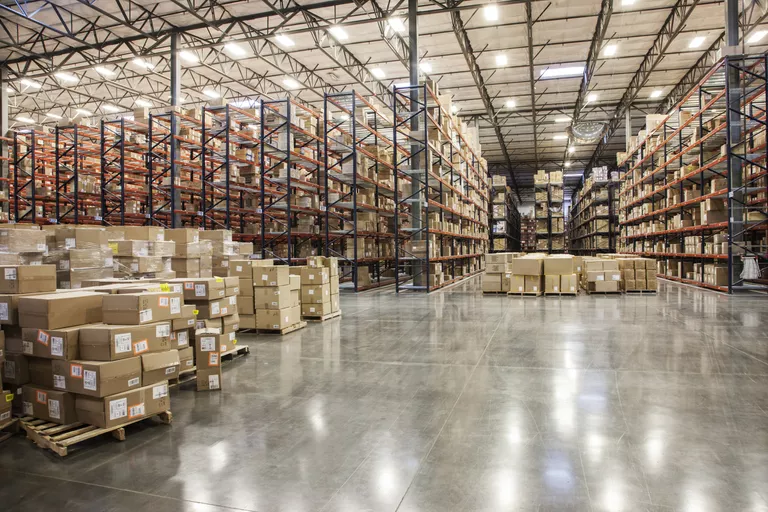
Warehousing plays a crucial role in the supply chain, acting as a bridge between production and consumption. Kolkata, a historic city and commercial hub in eastern India, has seen significant growth in its warehousing sector. This article delves into the current state, challenges, and future prospects of warehousing in Kolkata.
The Strategic Importance of Kolkata
Kolkata, formerly known as Calcutta, is the capital of West Bengal and one of India’s major ports. Its strategic location along the Hooghly River makes it a pivotal point for trade and commerce, not just within India, but also with neighboring countries like Bangladesh, Bhutan, and Nepal. The city’s rich cultural heritage and economic significance have made it a key player in the logistics and warehousing industry.
Evolution of Warehousing in Kolkata
Historical Context
Historically, Kolkata has been a significant trade center, dating back to the British colonial era. The establishment of the Kolkata Port Trust in 1870 marked the beginning of organized warehousing in the region. Early warehouses were primarily used for storing jute, tea, and other commodities crucial to the colonial economy.
Modern Developments
In recent decades, Kolkata has transformed into a modern warehousing hub. The advent of globalization and the liberalization of the Indian economy in the 1990s spurred the growth of various industries, necessitating advanced warehousing solutions. The city now boasts state-of-the-art warehouses equipped with modern technology to handle diverse goods ranging from electronics to pharmaceuticals.
Key Areas and Infrastructure
Major Warehousing Zones
Kolkata’s warehousing sector is concentrated in several key zones:
- Dankuni: Located on the outskirts of Kolkata, Dankuni is a major warehousing hub due to its proximity to National Highway 19 (NH-19) and the Kolkata-Delhi freight corridor.
- Budge Budge: This area is known for its proximity to the Hooghly River and the Budge Budge Port, making it ideal for storage and distribution of imported goods.
- Howrah: Known for its industrial base, Howrah has numerous warehouses that cater to both small and large-scale industries.
Infrastructure and Connectivity
The warehousing infrastructure in Kolkata has seen substantial improvements, with better roads, enhanced port facilities, and the development of dedicated freight corridors. The Kolkata Port and Netaji Subhas Dock provide crucial links for maritime trade. Additionally, the introduction of the Eastern Dedicated Freight Corridor (EDFC) has further bolstered Kolkata’s warehousing and logistics capabilities by improving rail connectivity.
Also Read: Warehousing Options in Lucknow: A Comprehensive Guide
Technological Advancements
Automation and Robotics
The integration of automation and robotics in Kolkata’s warehouses has revolutionized the industry. Automated storage and retrieval systems (ASRS) and robotic process automation (RPA) have increased efficiency and reduced operational costs.
Warehouse Management Systems (WMS)
Modern warehouses in Kolkata employ sophisticated Warehouse Management Systems (WMS) to streamline operations. These systems facilitate real-time tracking of inventory, optimize storage space, and improve order fulfillment rates.
Cold Storage Solutions
Given the growing demand for pharmaceuticals and perishable goods, cold storage facilities have become a critical component of Kolkata’s warehousing landscape. Advanced refrigeration technology ensures that temperature-sensitive products are stored and transported under optimal conditions.
Challenges Faced by the Warehousing Sector
Land Acquisition and Cost
One of the primary challenges in Kolkata is the high cost and complexity of land acquisition. Urban expansion and industrial development have driven up land prices, making it difficult for businesses to acquire large parcels of land for warehousing.
Regulatory Hurdles
Navigating the regulatory landscape in India can be daunting. Warehousing businesses in Kolkata often face challenges related to compliance with various state and central regulations, which can delay projects and increase operational costs.
Infrastructure Bottlenecks
Despite improvements, infrastructure bottlenecks remain a concern. Traffic congestion, inadequate road maintenance, and occasional port inefficiencies can disrupt the smooth flow of goods, impacting the overall efficiency of the warehousing sector.
Future Prospects
E-commerce Boom
The rapid growth of e-commerce in India is a significant driver for the warehousing sector in Kolkata. Companies like Amazon, Flipkart, and local e-commerce players are increasingly investing in large, modern warehouses to cater to the burgeoning demand for online shopping.
Government Initiatives
The Indian government’s focus on improving logistics infrastructure through initiatives like the Bharatmala Pariyojana and the Sagarmala Project promises to enhance connectivity and reduce logistics costs. These initiatives are expected to provide a significant boost to Kolkata’s warehousing sector.
Sustainable Warehousing
Sustainability is becoming a critical consideration in warehousing. The adoption of green building practices, solar power, and energy-efficient technologies is gaining traction. In Kolkata, several new warehousing projects are being designed with a focus on reducing carbon footprints and improving environmental sustainability.
Integration with Global Supply Chains
Kolkata’s strategic location and improving infrastructure make it an attractive hub for global supply chains. Increased foreign investment and partnerships with international logistics companies are likely to enhance the city’s warehousing capabilities, making it a key node in global trade networks.
Conclusion
Kolkata’s warehousing sector is poised for substantial growth, driven by technological advancements, strategic location, and supportive government initiatives. However, addressing challenges such as land acquisition, regulatory compliance, and infrastructure bottlenecks will be crucial for sustained development. As e-commerce continues to flourish and global supply chains become more integrated, Kolkata is well-positioned to emerge as a leading warehousing and logistics hub in the region.